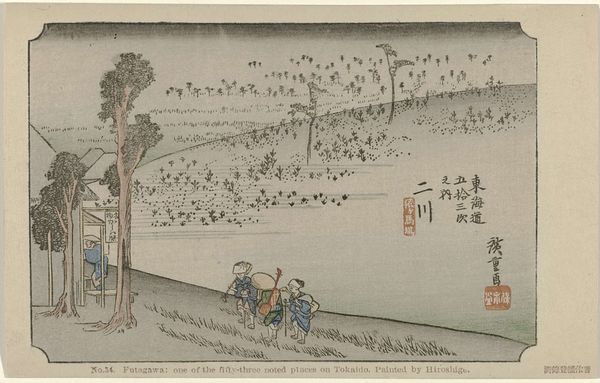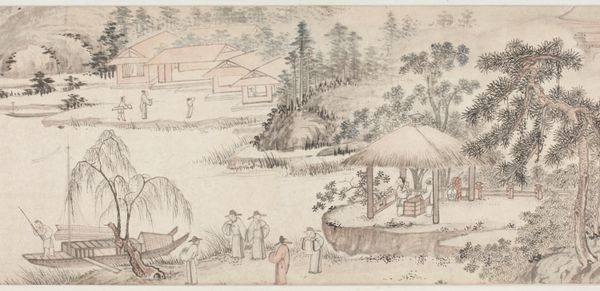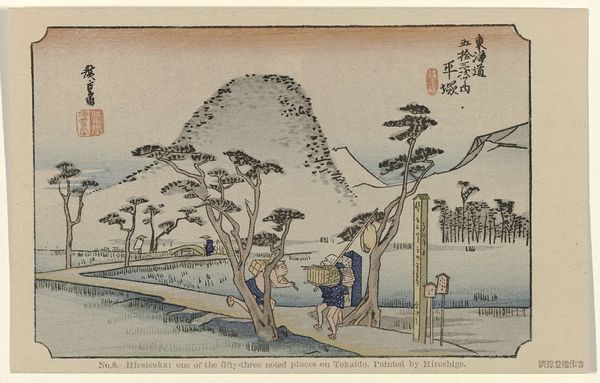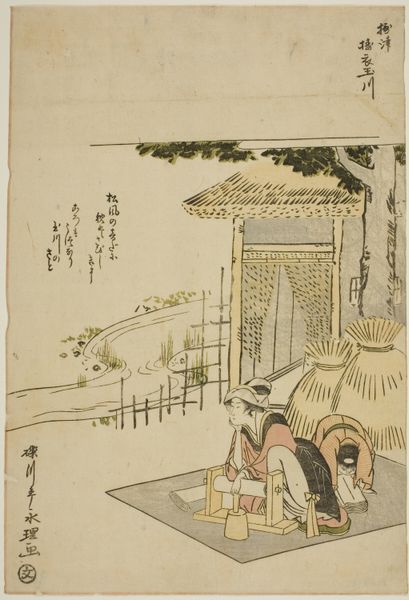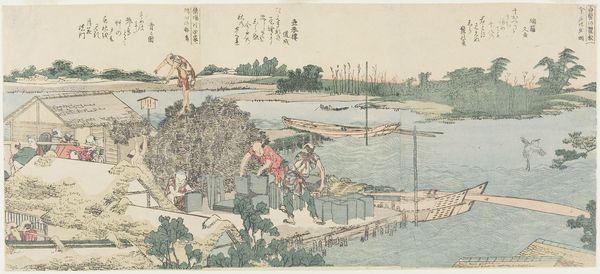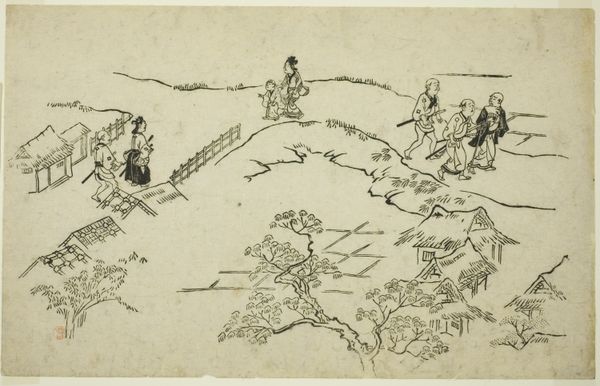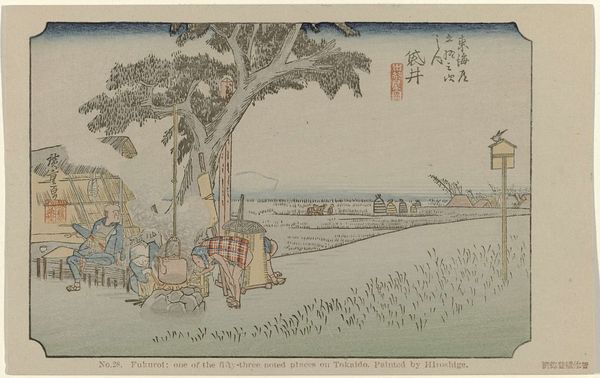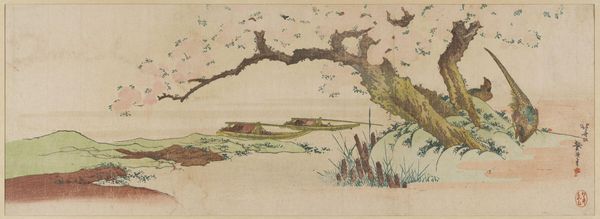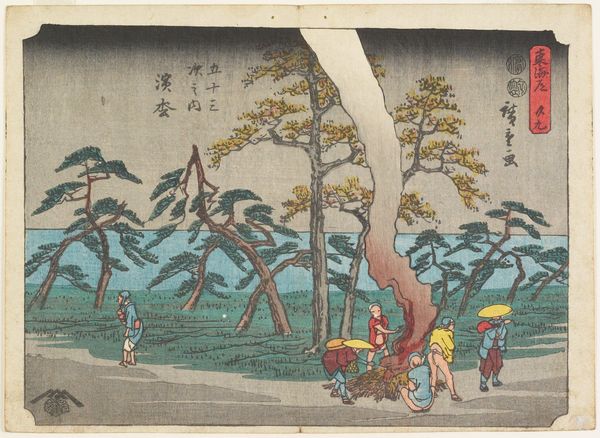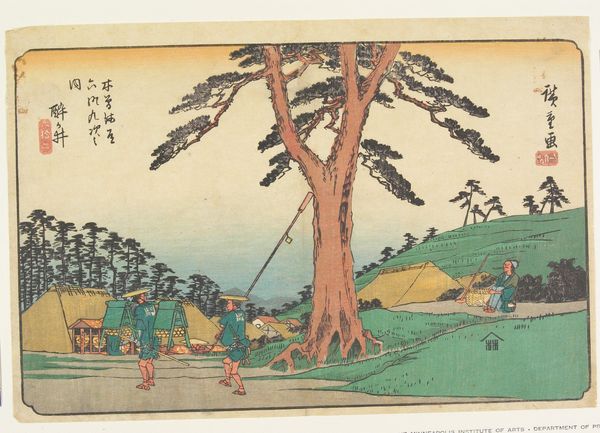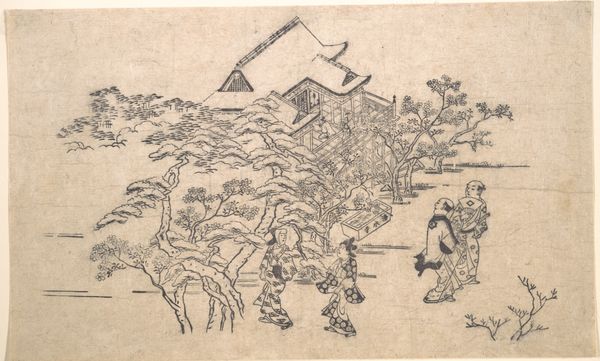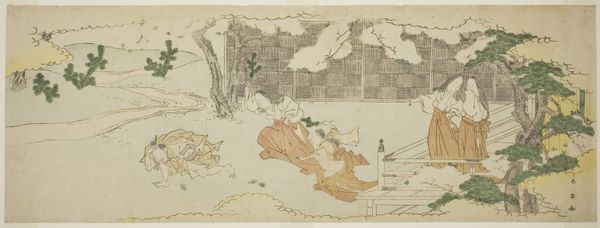
Rural Scene in Early Summer: Peasants Transplanting Rice and a Man Washing a Horse c. late 1790s
0:00
0:00
print, woodblock-print
#
ink painting
# print
#
asian-art
#
landscape
#
ukiyo-e
#
woodblock-print
#
genre-painting
Dimensions: 18.5 × 52.4 cm (7 5/16 × 20 5/8 in.)
Copyright: Public Domain
Editor: This is "Rural Scene in Early Summer: Peasants Transplanting Rice and a Man Washing a Horse," a woodblock print by Katsukawa Shun'ei from the late 1790s. It depicts everyday rural life in Japan. The flatness and stylized figures remind me a bit of folk art. What jumps out at you when you look at it? Curator: Well, the material production interests me. Shun'ei’s print, mass produced for popular consumption, blurs boundaries between 'high art' and 'craft'. Think of the labor involved: from the artist’s design to the carving of the woodblocks and the final printing process itself. Who were the artisans involved, and how did their labor shape the final image? Editor: That's interesting! I hadn’t considered that so many hands touched it. How does that change our perception? Curator: It repositions the artwork. The final product reflects a network of makers and their specific social context, more than solely the vision of the artist. How does the act of repetition in printmaking influence how the image circulates and is consumed? Is it a commodity, a work of art, or both? Editor: I suppose it's all those things. The print makes the scene accessible, something many people could own and reflect on. Curator: Exactly. The availability via print and relative low cost democratizes the image, and suggests a wider appreciation for the beauty and work of rural life. And what does it say about class? Who are these images *for*, who is *making* them, and what kind of cultural consumption do they represent? Editor: I didn't realize there were so many layers to consider in a seemingly simple print. It gives me a new perspective on how to examine art. Curator: Thinking about materials, process, and the broader social context really opens up our understanding, doesn't it? It's all connected.
Comments
No comments
Be the first to comment and join the conversation on the ultimate creative platform.
